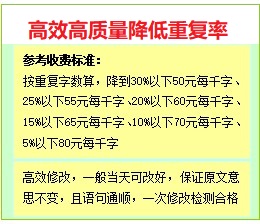在方法论上,本文对同一个样本观测值集合,分别应用动态面板数据模型的广义矩方法(GMM)和静态面板数据模型的随机效应广义最小二乘法(Random Effects GLS)进行了拟合和检验,并对所得结果进行了比较。结果表5.1所示。
表5.1 动态GMM与静态Random Effects GLS的参数估计结果比较
主营业务收入的对数 GMM参数
估计值 T检验 REGLS参数估计值 Z检验
前一期主营业务收入的对数 0.731783 25.18 N/A N/A
固定资产和流动资产之和的对数 0.19739 5.00 0.703444 29.61
员工总数的对数 0.052106 3.41 0.191474 13.73
董事前三名报酬总额 5.41E-08 2.10 8.90E-08 3.85
高管前三名稿酬总额 2.51E-08 1.03 -6.33E-09 -0.36
董事长与总经理是否兼任 -0.01247 -0.36 0.027871 0.87
外部董事比例的对数 0.009517 0.22 -0.02012 -1.27
第一大股东持有股份的比例的对数 0.094575 2.97 0.133674 3.72
是否国有控股 -0.0741 -2.50 -0.00367 -0.15
负债与权益市价比率的对数 0.105947 5.01 0.062057 3.94
是否在其他市场挂牌 0.007167 0.20 0.049778 0.92
前一年的审计意见 0.025626 0.54 -0.07662 -2.50
行业虚拟变量3 -0.8235 -2.84 0.204843 1.58
行业虚拟变量4 -0.73667 -3.19 0.195968 2.00
行业虚拟变量5 -0.49519 -2.96 0.259808 3.25
行业虚拟变量6 -0.04631 -0.18 0.967527 8.48
时间虚拟变量2002 N/A N/A 0.013171 0.55
时间虚拟变量2003 -0.00503 -0.18 0.090864 3.88
时间虚拟变量2004 -0.0284 -0.91 0.136044 5.12
常数项 0.58347 1.35 3.109136 6.58
由上表可以看出,在企业的规模收益方面,两个模型的对应结论较为相似,表明无论是采取动态收敛还是静态均衡的视角和假设,规模收益仍然为上市公司的盈利能力的增加提供了大部分或者最高比例的解释,而且规模收益度 均满足新古典假定 。在内部和外部治理结构变量方面,两个模型在对董事会成员的激励措施、股权结构与性质、要素市场约束和在其他市场挂牌上市等方面得出了类似的结论,而在对高级管理人员的激励、董事会的结构特征、审计制度的影响等方面,参数估计值符号相反或者在静态模型下不显著而在动态模型下显著,尤其是在审计制度的影响因子方面,静态模型得到了负的参数估计值(-0.07662)并在5%的水平下显著,与动态模型的实证结论有显著不同。
由于两个模型采取了动态与比较静态两种不同的视角,并从对数据的拟合效果来看均是对现实的有效模拟和近似,因此不能简单判断两者结论的对错与否。但从与理论解释的对照来看,动态面板数据模型本身即是从经济均衡分析的框架中导出,且GMM估计关于上市公司治理结构每个方面的结论更符合理论上的预期,包括国有控股、股权集中度、外部董事的作用、高管薪酬的激励等治理变量的影响方向和显著性水平,从而更好地验证了新古典经济学和公司治理理论在现实经济环境中的解释能力,从“证实”而非“证伪”的科学哲学角度而言,动态面板数据模型的GMM估计是一个解释能力更强的实证研究方法,实证结论也相对更为可信。
从计量技术的方法论角度来看,由于动态模型控制了调整因子并且广义矩方法没有“未控制的分组效应 与解释变量无关”的附加假设,相对于静态模型在更一般的假设条件下得出了更丰富的结论。另一方面,由于企业经营活动的复杂性, 极有可能与企业的生产经营活动以及公司治理变量密切相关,从而使随机效应一般最小二乘法(REGLS)附加假设不成立,这是最有可能造成其估计结果失效的原因。因此,在应用随机效应模型时,需要对有关分组效应 的附加假设(iv)进行更为谨慎的检验和分析(Bhargava和Sargan,1983)[10]。
综上,广义矩方法和动态面板数据模型的结合在较少的假设条件下得到了有关上市公司治理效果的渐进一致估计量,并在与公司治理理论的结合方面体现出了一定的优势,在计量技术上是一种更具一般性的实证分析手段。本文进一步将之应用于对非成长型上市公司治理效果的实证分析,对本文的实证结论进行了检验和修正。
参考文献
[1] Anderson, T. W. & Hsiao, C. Formulation and Estimation of Dynamic Panel Models Using Panel Data[J]. Journal of Econometrics, 1982, (18): 47-82
[2] Acemoglu, D. Asymmetric Information, Bargaining, and Unemployment Fluctuations[J]. International Economic Review, 1995, Vol. 36(4): 1003-1024.
[3] Aghion, P. & Tirole, J. Formal and Real Authority in Organizations[J]. Journal of Political Economy, 1997, (105): 1-29
[4]
[5] Arellano, M. & Bond, S. Some tests of specification for panel data: Monte Carlo evidence and an application to employment equations[J]. The Review of Economic Studies, 1991, (58): 277-297.
[6] Arrow, K. J., & Debreu, G. Existence of an Equilibrium for a Competitive Economy[J]. Econometrica, 1954, Vol. 22(3): 265-290.
[7] Arrow, K. J., & Hurwicz, L. On the Stability of the Competitive Equilibrium[J]. Econometrica, 1958, Vol. 26(4): 522-552.
[8] Arrow, K. J., & Hurwicz, L. Some Remarks on the Equilibria of Economic Systems[J]. Econometrica, 1960, Vol. 28(3): 640-646.
[9] Berglof, E., & Von Thadden, E. L. Short-term Versus Long-term Interests: A Model of Capital Structure with Multiple Investors[J]. Quarterly Journal of Economics, 1994, (109): 1055-1084
[10] Bhargava, A. & Sargan, J. D. Estimating Dynamic Random Effects Models from Panel Data Covering Short Time Periods[J]. Econometrica, 1983, Vol. 51(6): 1635-1660
[11] Blundell, R. & Bond, S. Initial conditions and moment restrictions in dynamic panel data models[J]. Journal of Econometrics, 1998, (87): 115-43.
[12]
[13] Breusch, T. S. & Pagan, A. J. The Lagrange Multiplier Test and its Applications to Model Specification in Econometrics[J]. The Review of Economic Studies, 1980, Vol. 47(1), Econometrics Issue: 239-253
[14] Brian, J. H. & Leibman, J. B. Are CEOs Really Paid Like Bureaucrats? Working Paper, Harvard University and NBER, 1997
[15] Burkart, M., Gromb, D. & Panunzi, F. Large Shareholders, Monitoring, and the Value of the Firm[J]. The Quarterly Journal of Economics, 1997, Vol. 112(3): 693-728
[16] Cheung, S. The Contractual Nature of the Firm[J]. Journal of Law and Economics, 1983, Vol 26(1): 1-21
[17] Claessens, S. Corporate Governance and Equity Prices: Evidence from the Czech and Slovak Republics[J]. The Journal of Finance, 1997, Vol. LII(4): 1641-1658
[18]
[19] Coase, R. H. The Nature of the Firm[J]. Economica, 1937, Vol. 4(16): 386-405
[20] Demsetz, H. & Lehn, K. The Structure of Corporate Ownership: Causes and Consequences[J]. The Journal of Political Economy, 1985, Vol. 93(6): 1155-1177.
[21] Dewatripont, M. & Tirole, J. A Theory of Debt and Equity: Diversity of Securities and Manager Shareholder Congruence[J]. Quarterly Journal of Economics, 1994, (109): 1027-1054
[22] Du, J. & Dai, Y. Ultimate Corporate Ownership Structures and Capital Structures: Evidence from East Asian Economies[J]. Corporate Governance, 2005, Vol. 3(1): 60-71
[23]
[24] Fama, E. & Jensen, M. C. Agency Problems and Residual Claims[J]. Journal of Law and Economics, 1983, Vol. 26(2), Corporations and Private Property: A Conference Sponsored by the Hoover Institution: 327-349.
[25]
[26] Grossman, S. J. & Hart, O. D. The Costs and Benefits of Ownership: A Theory of Vertical and Lateral Integration[J]. The Journal of Political Economy, 1986, Vol. 94(4): 691-719
[27] Hart, O. & Moore, J. Property Rights and the Nature of the Firm[J]. The journal of Political Economy, 1990, Vol. 98(6): 1119-1158
[28] Hart, O. & Moore, J. Foundations of Incomplete Contracts[J]. The Review of Economic Studies, 1999, Vol. 66(1): 115-138
[29] Hermalin, B. E. & Weisbach, M. S. The Determinants of Board Composition[J]. The RAND Journal of Economics, 1988, Vol. 19(4): 589-606.
[30] Hermalin, B. E. & Weisbach, M. S. Endogenously Chosen Boards of Directors and Their Monitoring of the CEO[J]. The American Economic Review, 1998, Vol. 88(1): 96-118.
[31] Holmstrom, B. & Milgrom, P. Multi-task Principal-Agent Analyzes: Incentive Contracts, Asset Ownership, and Job Design[J]. Journal of Law, Economics and Organization, 1991, 7th Special Issue: 24-52
[32] Hsiao, C. Analysis of Panel Data, 2nd ed[M]. Beijing: Cambridge University Press, 2003
[33] Jensen, M. C. & Meckling, W. Theory of the firm: managerial behavior, agency costs, and capital structure[J]. Journal of Financial Economics, 1976, (3): 305-360
[34] Jensen, M. C. The Modern Industrial Revolution, Exit, and the Failure of Internal Control Systems[J]. The Journal of Finance, 1993, Vol. 48(3), Papers and Proceedings of the Fifty-Third Annual Meeting of the American Finance Association: 831-880.
[35] Johnson, S., La Porta, R. & Lopez-de-Silanes, F. et al. Tunneling[J]. The American Economic Review, 2000, Vol. 90(2), Papers and Proceedings of the One Hundred Twelfth Annual Meeting of the American Economic Association: 22-27
[36] Klein, B., Crawford, R. G. & Alchian, A. A. Vertical Integration, Appropriable Rents, and the Competitive Contracting Process[J]. Journal of Law and Economics, 1978, Vol. 21(2): 297-326.
[37] La Porta, R., Lopez-de-Silanes, F. & Shleifer, A. et al. Legal Determinants of External Finance[J]. The Journal of Finance, 1997, (3): 1131-1150
[38] La Porta, R., Lopez-de-Silanes, F. & Shleifer, A. et al. Corporate Ownership around the World[J]. The Journal of Finance, 1999: 471-517
[39] Lease, R. C., McConnell, J. J. & Mikkelson, W. H. The Market Value of Differential Voting Rights in Closely Held Corporations[J]. The Journal of Business, 1984, Vol. 57(4): 443-467.
[40] Modiglianni, F. & Miller, M. H. The Capital Cost, Corporate Finance and the Theory of Investment[J]. American Economic Review, 1958, (48): 261-297
[41] Nerlove, M. Estimation and Identification of Cobb-Douglas Production Functions[M]. Amsterdam: North-Holland Publishing Company, 1965
[42] Rajan, R. G. & Zingales, L. What Do We Know About Capital Structure? Some Evidence About International Data[J]. The Journal of finance, 1995, (5): 1421-1460
[43]
[44]
[45]
[46]
[47] Shleifer, A. & Vishny, R. W. A Survey of Corporate Governance[J]. The Journal of Finance, 1997, (2): 737-783
[48]
[49] Wald, J. How Firm Characteristics Affect Capital Structure: An International Comparison[J]. Journal of financial research, 1999: 161-187
[50] Williamson, O. E. Transaction-Cost Economics: The Governance of Contractual Relations[J]. Journal of Law and Economics, 1979, Vol. 22(2): 233-261
[51] Wooldridge, J.M. Applications of Generalized Method of Moments Estimation[J]. The Journal of Economic Perspectives, 2001, Vol. 15(4): 87-100
[52]
[53] 白重恩,刘俏,陆洲等. 中国上市公司治理结构的实证研究[J]. 经济研究,2005,(2):81-91
[54]
[55] 陈晓,江东. 股权多元化、公司业绩与行业竞争性[J]. 经济研究,2000,(8):28-35
[56] 杜胜利,翟艳玲. 总经理年度报酬决定因素的实证分析——以我国上市公司为例[J]. 管理世界,2005,(8):114-120
[57] 樊行健. 公司治理与财务理论[J]. 会计研究,2005,(2):70-72
[58] 方芳,闫晓彤. 上市公司控股股东变更对公司绩效的影响[J]. 经济理论与经济管理,2004,(4):36-40
[59]
[60] 何卫东. 深交所上市公司治理调查分析报告[M]. 深圳:深证综研字第0086号,2003
[61] 胡晓阳,李少斌和冯科. 我国上市公司董事会行为与公司绩效变化的实证分析[J]. 中国软科学,2005,(6):121-126
[62] 李常青,赖建清. 董事会特征影响公司绩效吗[J]. 金融研究,2004,(5):64-77
[63] 李建强. 证券基金参与治理──改革国有上市公司治理结构的有效途径[J]. 财经科学,2000增刊:118-120
[64]
[65] 李维安. 中国公司治理原则与国际比较[M]. 北京:中国财政经济出版社,2001
[66]
[67] 梁文忠. 我国股票上市制度变迁的绩效分析[J]. 经济评论,2004,(6):103-112
[68] 林海涛. 我国上市公司管理层收购的实证研究——兼论对国有企业改革的意义[J]. 经济学家,2005,(1):62-67
[69]
[70] 林毅夫,李周. 现代企业制度的内涵与国有企业改革方向[J]. 经济研究,1997,(3):3-10
[71]
[72]
[73] 邵国良,张仁寿. 中国民营上市公司治理机制考察与实证分析[J]. 南方经济,2005,(7):35-37
[74] 沈坤荣,胡春风. 转型期中国股市变迁及其绩效的实证研究[J]. 南京大学学报,2004,(6):42-50
[75]
[76] 孙永祥. 所有权、融资结构与公司治理机制[J]. 经济研究,2001,(1):45-53
[77] 孙铮,姜秀华和任强. 治理结构与公司业绩的相关性研究[J]. 财经研究,2001,(4):3-11
[78] 唐跃军,肖国忠. 独立董事制度的移植及其本土化——基于对500家中国上市公司的问卷调查[J]. 财经研究,2004,(2):117-130
[79] 汪辉. 上市公司债务融资、公司治理与市场价值[J]. 经济研究,2003,(8):28-35
[80]
[81] 王韬,李梅. 轮股权泛化条件下的内部人控制[J]. 金融研究,2004,(12):106-111
[82] 吴敬琏. 现代公司与企业改革[M]. 天津:天津人民出版社,1994
[83] 夏冬林. 我国上市公司股东大会功能分析[J]. 会计研究,2003,(3):12-17
[84] 香港大学课题组. 民营上市公司的经营绩效和治理结构研究[J]. 上证研究,2004,(2):125-163
[85] 徐晓东,陈小悦. 第一大股东对公司治理、企业业绩的影响分析[J]. 经济研究,2003,(2):64-74
[86] 姚伟,黄卓和郭磊. 公司治理理论前沿综述[J]. 经济研究,2003,(5):83-90
[87] 岳彦芳. 国有股减持与上市公司治理结构的转变[J]. 中央财经大学学报,2002,(6):67-69
[88] 张维迎. 西方企业理论的演进与最新发展[J]. 经济研究,1994,(11):70-81
[89] 张维迎. 所有制、治理结构与委托代理关系:兼评崔之元和周其仁的一些观点[J]. 经济研究,1996,(9):3-15
[90] 张维迎. 产权安排与企业内部的权力斗争[J]. 经济研究,2000,(6):41-50
[91] 郑志刚. 公司治理机制理论研究文献综述[J]. 南开经济研究,2004,(5):26-33
中国上市公司治理结构动态研究(五)由毕业论文网(www.huoyuandh.com)会员上传。


